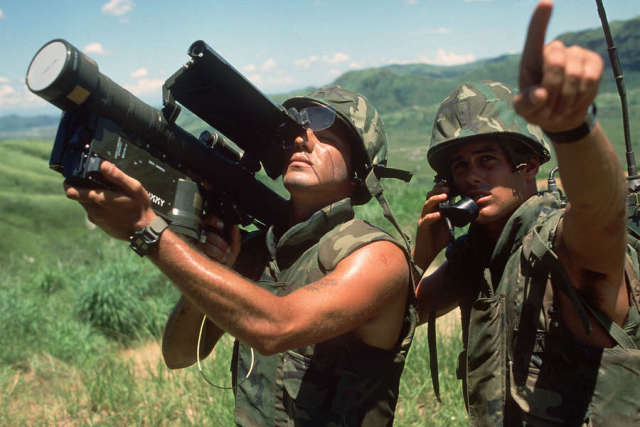The United States recognized that the Stinger MANPADS are outdated, and its reserves in the country are not enough
The US public procurement website has published an application for a tender to find a replacement for the FIM-92 Stinger portable anti-aircraft missile system (MANPADS), which is in service with the US army and is actively supplied to various countries of the world, including Ukraine. According to the text of this application, the Stinger electronics will become obsolete in 2023, and the stocks of these weapons are depleted.
"The reprogrammable Stinger microprocessor will become obsolete in fiscal year 2023. Stinger's current stocks are in decline. The Army plans to begin designing, developing and testing a new missile in fiscal year 2023," the synopsis of the application on the US government procurement website posted by the US Army Program Office for Missiles and Space (The US Army Program Executive Office, Missiles and Space) notes.
The application states that the creation of a new MANPADS should meet "modern threats, including from forces close in level to the US army." "These efforts serve as a bridge to meet the growing demand for improved short-range air defense to support maneuverable forces," the document says.
In addition, the technical characteristics of the new rocket are listed there: it should confidently hit helicopters, airplanes and unmanned aircraft systems, and be launched from a universal launcher.
At the same time, the new missile should "detect targets better, have a longer range and a higher probability of hitting the target, be safe for the shooter, easy to train and easy to maintain." Today, the maximum firing range of the Stinger, according to open sources, is 4500 m, the height of the target is 3800 m. The indicators of the Russian Verba complex are 6,400 m in range and 4,500 m in height.
Igor Korotchenko, Director of the Center for Analysis of the World Arms Trade (CAMTO), believes that the main reason for replacing the Stinger is the need to improve it.
"The Stinger MANPADS are an effective, time-tested weapon, quite good. But, obviously, the new element base, new technological capabilities dictate the need to improve any means of conducting armed struggle, including this," Korotchenko said in an interview with Gazeta.Ru».
In turn, the expert of the Russian Council on International Affairs (RIAC) Alexander Ermakov directly called the Stinger complex obsolete. He noted that the United States traditionally pays little attention to the development of MANPADS.
"The Stinger complex is a classic MANPADS of the 1980s and 1990s. The United States paid rather little attention to the development of MANPADS, since they rely on the fact that their aviation will provide air supremacy. That is, in practice, the American military "Stingers" are unlikely to have ever [actively] used themselves. It was a low priority task for them. Therefore, the Congress blocked these topics earlier," the expert noted.
According to him, an important factor that forced Congress to approve the development and allocate funding this time is the supply of Stingers to Ukraine. "Now [the US military] has begun to whine loudly that all the missiles have been handed over to Ukraine. They have nothing to fight with. Not literally nothing, but probably it was a significant consumption of stocks, since they hardly had a lot of MANPADS," Ermakov said.
Igor Korotchenko noted that the new missile should have an increased range and better distinguish the target from heat traps.
"The main result of modernization and the introduction of new technological solutions will be an increase in the affected area both in range and height, as well as an increase in the guarantee of hitting targets. This means some element of goal selection according to certain principles," Korotchenko said.
According to him, the new rocket will be "significantly more expensive". The increase in the price depends on the tasks that will be determined for it and the requirements that will be developed for the project. "The tasks may come down to the fact that the United States used to wage war with an unequal enemy, and now there is a greater threat of a collision with another enemy - with an equal, technically advanced one," Ermakov summed up.
Denis Telmanov

